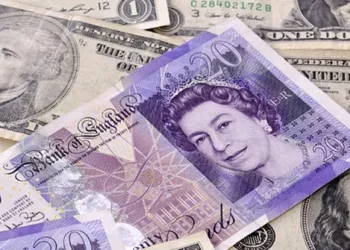The USD/JPY pair eased to around 147.90 during the Asian trading session on Tuesday, retreating from more than 2% gains posted in the prior session. The pullback comes as the Japanese Yen (JPY) regains footing, bolstered by cautious commentary from Bank of Japan (BoJ) officials and persistent uncertainty over the central bank‘s rate trajectory.
BoJ Deputy Governor Shinichi Uchida struck a balanced tone on Japan’s economic outlook, warning of both upside and downside risks stemming from potential U.S. tariffs. Uchida acknowledged that protectionist trade measures could weigh heavily on Japan’s export-driven economy. Nonetheless, he maintained that Japan’s growth is expected to decelerate toward its potential before recovering in tandem with global economic improvement.
In a more optimistic signal for inflation, Uchida highlighted rising wages amid a tight labor market, suggesting that companies are increasingly able to pass on higher labor costs to consumers. This, he said, could provide sustained support for underlying inflation and expectations going forward.
Meanwhile, Japanese Finance Minister Katsunobu Kato said on Tuesday that Tokyo is open to talks with U.S. Treasury Secretary Scott Bessent on foreign exchange matters and ongoing tariff negotiations. While Kato stopped short of commenting on exchange rate levels, he stressed Japan’s vigilance regarding the evolving U.S.-China trade situation.
Further insight into the BoJ’s policy stance emerged from the Summary of Opinions released from the April 30–May 1 monetary policy meeting. The document revealed a divided central bank, with some members favoring continued rate hikes in line with improving economic fundamentals. One policymaker underscored that real interest rates remain deeply negative and supported maintaining a hawkish tilt, though another warned that U.S. trade policies could severely impact Japan’s economic and inflation prospects.
Over the weekend, the United States and China agreed to temporarily halt the imposition of steep, triple-digit tariffs as part of early-stage trade talks in Switzerland. This 90-day pause offers financial markets temporary relief, though the threat of renewed tariffs still looms if negotiations falter.
In the U.S., attention now turns to the April Consumer Price Index (CPI) report, due later on Tuesday. Economists expect a monthly rebound in both headline and core CPI to 0.3%, from previous readings of -0.1% and 0.1% respectively. Year-over-year inflation figures are forecast to remain steady, and the data could influence the Federal Reserve’s next steps in its monetary policy path.
Market Outlook
Despite the pullback, USD/JPY remains elevated, with traders balancing optimism around global trade de-escalation against persistent policy uncertainty from both the Federal Reserve and the Bank of Japan. The pair’s near-term direction is likely to hinge on the tone of upcoming U.S. inflation data and any fresh signals from BoJ officials regarding the pace of future rate hikes.
Related Topics:























